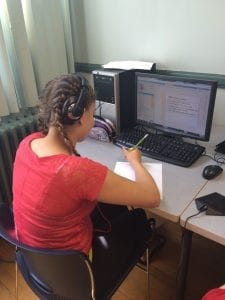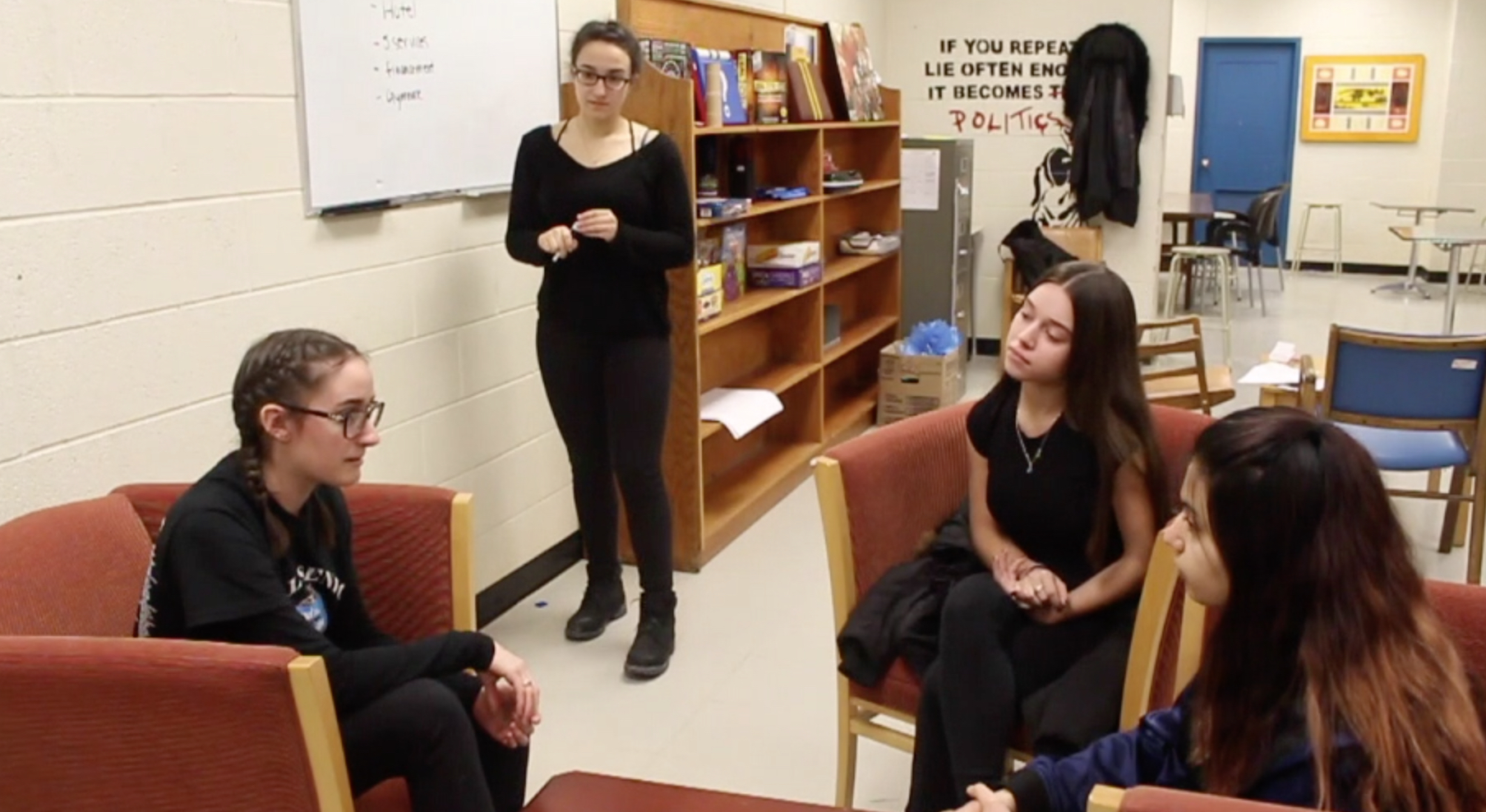 This year, I had the opportunity to work directly and almost daily with the online teaching team at LEARN. My job: to facilitate and guide (heaven help them!) the design, development and delivery of our new Self-Paced Blended Learning courses. I joke because although I’ve worked in the field for well over 20 years, I’m still a relative newbie compared to some of the incredible veteran educators with whom I collaborate. And, although I never had any real contact with our online students, through our teaching team, I feel that I know them.
This year, I had the opportunity to work directly and almost daily with the online teaching team at LEARN. My job: to facilitate and guide (heaven help them!) the design, development and delivery of our new Self-Paced Blended Learning courses. I joke because although I’ve worked in the field for well over 20 years, I’m still a relative newbie compared to some of the incredible veteran educators with whom I collaborate. And, although I never had any real contact with our online students, through our teaching team, I feel that I know them.
The student was at the heart of almost every discussion we had about learning (online). The teachers talked about the students who needed more support and preferred meeting in our one-on-one teaching platform, or via email, or even Twitter; those who loved to use Desmos, Geogebra and VoiceThread; those who participated more actively in forums and reflection activities; the ones who needed learning materials to be provided at a more accelerated pace; and the special few who insisted on staying connected and on top of their studies… in the bush… during goose hunting season!
What we were essentially exploring and allowing to drive our pedagogical model and practice was the idea of personalization. How could we vary our instruction to effectively reach and teach as many students as possible? Not a new idea… but not an easy one. It takes a group of responsive/dedicated/innovative teachers, a supportive/forward-thinking administration, and an organizational culture that embraces the student and his/her success as its raison d’être.
Two weeks ago, we surveyed this year’s online cohort about their experience as learners. We asked what the students perceived as the advantages of learning in an online, blended environment, and whether they felt that their individual learning needs had been met. Below is a representative sampling of their responses, grouped by a few of the core elements of personalization, which speak to how all learning can be designed to support individual needs, preferences, aspirations and backgrounds.
Pacing & Flexibility:
We can re-watch classes, do things at your own pace and do more practice questions.
There are many resources readily available to students all the time. In self-paced, you can also take topics at your own pace (within reason). If I struggle with one specific topic, I can take a bit more time on it, while I go through topics I understand more quickly.
You get to work at your own pace, doing the work when you have time instead of cramming everything in one night.
No matter what time of day, I don’t need be in school to ask questions, and when I do, it is made sure that I understand everything.
I find the teachers are more available to help and there are a lot more resources to help the students.
I think the advantages of taking an online course are the flexibility in our schedules and learning to organize and motivate ourselves to do the work on time.
My online teachers are very flexible when it comes to helping, I find that they make themselves available at nearly anytime if we need it. For instance, we can ask them a question through Twitter after class time and it won’t be long before we get a reply.
You can move through the class at your own pace and re-watch the class at home if needed.
The online class allows me to have an opportunity to take classes that are not offered at my school. It has helped my understanding in my course and I think I am improving because of it.
No snow days! No sick days! It’s one of the most convenient things ever, being able to continue to go to class even if we’re stuck at home. It’s also so much easier to catch up on missed work, what with VTs and archived classes.
Varied Instructional Approaches/Tools:
Having access to all of the resources to help learn/study at any second.
The slides in class and the VoiceThreads help me a lot because I’d say that I’m a visual learner
As a more kinaesthetic learner I’ve found some of the stuff hard as it can be very visual/auditory based and my teachers have worked with me to find a way of learning that helps me understand everything.
My teacher has helped me every time I’ve asked. She’s been really good to adjust for us and host tutoring sessions to enrich our learning. She is also very consistent which is important as an online teacher and she allows for learning and understanding before switching topics.
Well I’m a visual learner, if I see it once or twice, I usually get a good grasp on a concept. So, if the class shows a visual example of how to do it (which online math seems to do quite often) I usually get it. And the teacher was there to support me if I am struggling at a certain concept, or if I have a question I’d like answered, I always get a good answer.
I’ve always taken into account the organization of online classes. Compared to my in-school classes, I find that every class/test/homework is planned out in advance and we’re provided with overviews that are always followed. The recordings are also a great advantage, being able to re-watch a class or watch one you were absent for is extremely useful. Online classes also present us with many online tools and get us familiar with computer-oriented working.
As a student coming from a school where I’ve had the same teachers since pre-k, it is super refreshing to have new teachers. Also, you get the opportunity to take courses required for certain college programs.
I think one advantage would be the flipped classes, because it allows us to work with the teacher during classes, and learn at home through VT’s (VoiceThreads).
The teachers explain super well, and provide many resources that help a lot. If there is something I don’t understand, the teacher will take the time to help and make sure we can succeed.
The VoiceThreads really supported my needs. I’m able to hear how we do things which allows me to understand that much more. When in class, the board allows me to visualize everything we’re doing and that way I can learn a lot more information than if we did this without it. I love how the teacher always explains it in full and always makes sure you understand entirely.
Online you can do cool stuff like online project slideshows and the use programs on Zenlive that make it more active for both students and teachers.
Flipped classroom! When done correctly, like with online math, flipped classroom is the greatest way to learn! I can press pause on what the teacher is saying, take notes, and take time to understand. The way flipped classroom is, it’s easier to understand and to learn, easier to digest the information spewed at a fast rate. It gives more freedom, allows all of us to learn in our own ways.
Opportunities for Student Voice & Agency:
Although this is a harder course, I get to choose when, where, why, and how I learn. This is very special, and what makes online classes so important.
In an online class you can be more open to ask questions if you’re a shy person since you aren’t face to face with other students and you can message your teachers questions anytime you have one even if you aren’t in class.
Online math is one of the most comfortable ways to learn. No need for social anxiety, as no one’s there in person. No need to have to tell others to shut up and let you focus, as you don’t have to listen to anyone if you don’t want to. I can focus solely on the teacher and the material. I can relax and learn. Though it is advanced, difficult, and sometimes taxing, online math is very flexible and freeing. A lot more responsibility with time management, but that’s okay.
It teaches independence and how to take charge of your own studies.
I can be more responsible as a student, and there are tons of tools to help learn stuff. The flipped classes are also more effective, learning in VT’s and applying it in class.
It helps you grow as a student independently and teaches you to manage your time wisely. It also helps you familiarize yourself with technology that’s used in the workforce.
Somehow, it’s a more personal form of learning, more tailored to each student’s needs because we, the students, have more control over how we learn.
The Student Meeting (one-on-one support):
Weekly meetings keep us on track and they are available almost all the time when we need them.
If I ever have any difficulty, my teacher is always available by email and meeting weekly helps to ensure that I’m understanding the material and keeping up with my work. I’ve loved working through LEARN online this year for chemistry and honestly wish I was doing more of my classes online!
I was struggling near the middle of the year and we’ve had a few discussions about it, which helped set me back on track.
My teacher has been great she always makes sure I understand the concept of our lessons and always makes sure I’m doing the best work I can. She wants me to succeed at the highest level I can.
Whenever I felt stressed she was always there to answer my questions. If I didn’t understand a question she would make a VT for me or meet with me in Zenlive. She made tutoring accessible for me. Gave me extra help when I needed it. If I couldn’t attend my usual class she would let me come to another class.
In my opinion, incredibly, online teachers are so much more present, so much more connected with their students, than offline teachers.
I have had a lot of online time with the teacher and it has helped me improve in math quite a bit. I am very proud of my work!
I would be negligent if I didn’t mention the learner who, as an individual, simply feels more comfortable working face-to-face, with peers and teacher in the same room. Of LEARN’s online students this year, approximately 8% suggested that they would have preferred to take their course(s) at their own school, with a teacher who was physically present. Online learning, however blended, innovative or personalized, is not for everyone. And, although technology can certainly facilitate key aspects of personalized learning, we can see from our students’ responses (and my colleague Audrey McLaren’s two-part blog post) that the human touch, be it online or in person, remains equally, if not more important in this mix.
Kristine Thibeault
Coordinator of Online Learning, Virtual Campus
LEARN






Thanks Kristine. It sounds like it was a great first year!